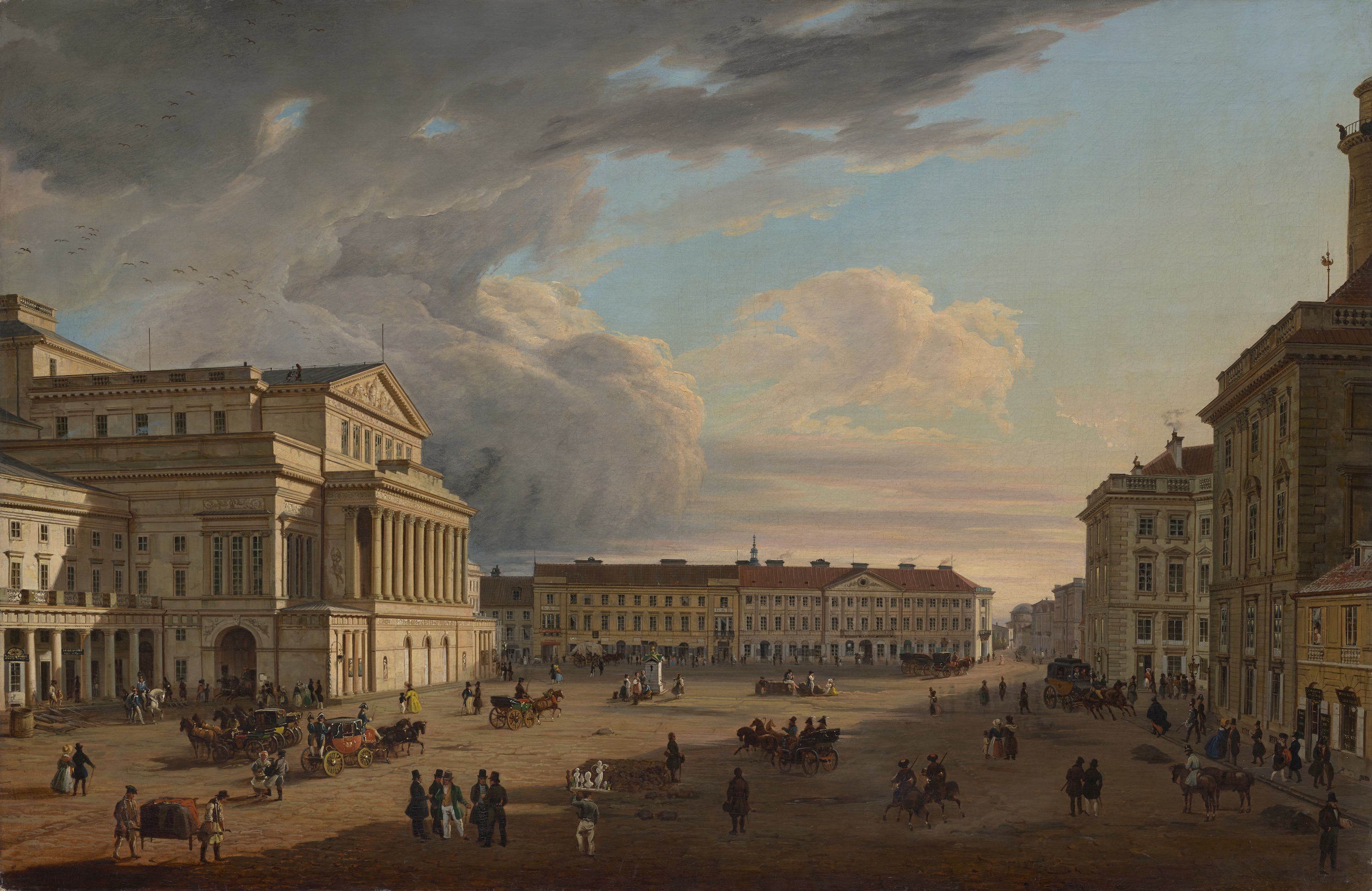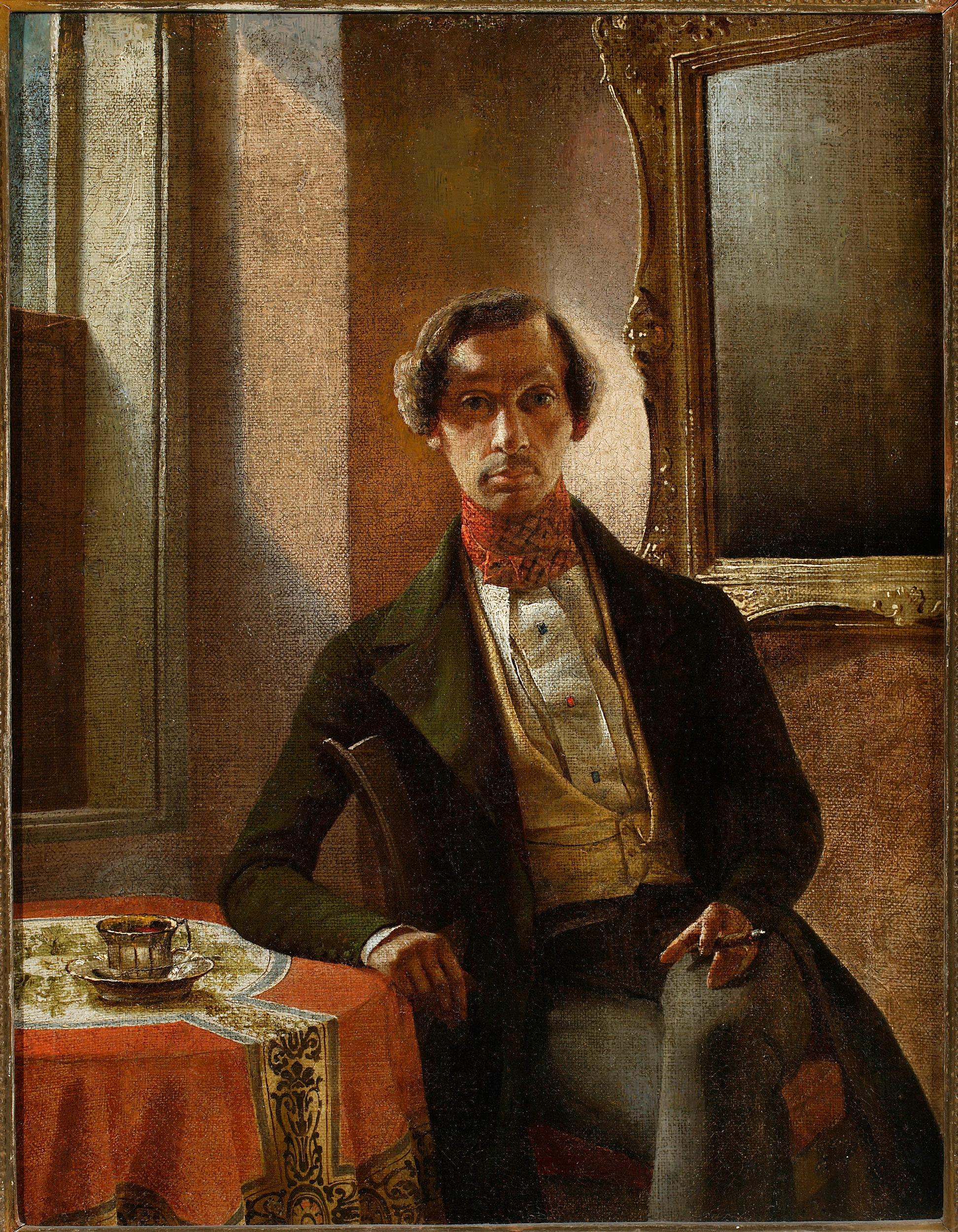This work was painted by Marcin Zaleski (1796–1877), an outstanding Polish cityscape painter who created numerous views of Warsaw and of the interiors of Warsaw buildings.
Immediately after completion, the painting featured at the Fine Arts Exhibition in Warsaw in 1838. It is listed in the catalog as The Square in Front of the Grand Theatre (Teatr Wielki), complete with a note that reads: “painted from nature.” In 1909, the work served as an opening piece of the artist’s monographic exhibition at the Society for the Encouragement of Fine Arts in Warsaw, which testified to its major artistic value.
Have you ever been to my hometown, Warsaw? The square is portrayed from the side of Senatorska Street in the direction of Bankowy Square. Visible on the left is the classic edifice of the Grand Theatre. Designed by Antonio Corazzi, it was built between 1825 and 1833, partly on the site of the demolished 16th-century commercial and residential compound known as Marywil, funded by Queen Maria Kazimiera Sobieska (Marie Casimire de La Grange d’Arquien, Marysieńka, 1641–1716, Queen of Poland 1676–1696). Corazzi turned the Column House, adjacent to Marywil, into the eastern wing of the theater (visible in the foreground). The architect added an enormous main corpus with the theater hall and a twin wing on the western side, complete with the Reduta Halls. Initially, the edifice was to serve as a new seat of the National Theatre. Yet, completed after the fall of the November Uprising, the building could no longer bear that name. Upon an order of Tsar Nicholas I Romanov (1796–1855, Emperor of Russia since 1825, King of Poland 1825–1831), it was named the Grand Theatre.
Visible in the background—on the corner of Wierzbowa and Senatorska Streets—is the classic house of the banker and lottery lessee Jan Krzysztof Petyskus. The city hall building closes the square from the right. The former Jabłonowski Palace became the seat of the municipal authorities in 1817 after they had relocated from Old Town Market Square. Structured in the second half of the 1820s, Theatre Square was one of the largest and most prominent squares in Warsaw. It was a center of cultural, administrative, and commercial life of the city, as well as a major transport hub.
We present today's painting thanks to Museum of Warsaw.
P.S. Don't forget to follow DailyArt Magazine on Instagram!


 Marcin Zaleski
Marcin Zaleski